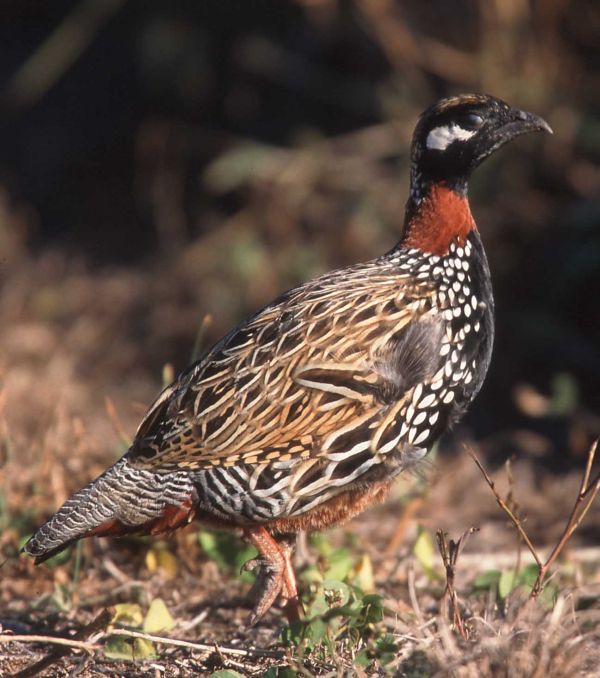|
| Query: Birds | Result: 2135th of 32675 | |
Black Francolin (Francolinus francolinus) - Wiki
| Subject: | Black Francolin (Francolinus francolinus) - Wiki
| |

| Resolution: 600x678
File Size: 69477 Bytes
Upload Date: 2006:12:13 10:13:58
|
Black Francolin
From Wikipedia, the free encyclopedia
[Photo] Black Francolin (Francolinus francolinus) from USDA NRCS
The Black Francolin, Francolinus francolinus, is a gamebird in the pheasant family Phasianidae of the order Galliformes, gallinaceous birds.
Francolinus francolinus is one of the few francolins to have a range outside Africa. It is a resident breeder from Cyprus and south-eastern Turkey eastwards through Iran to southwest Turkmenistan and northeast India. Its range was formally more extensive, but over-hunting has reduced its distribution and numbers. There have been a number of introductions, but most have failed to take root.
Francolinus francolinus is found in scrubby habitats with plenty of low cover. It nests in a bare ground scrape laying 8-12 eggs. Black Francolin takes a wide variety of plant and insect food.
The Grey Partridge-sized male is mainly black, with white spotting on the back and flanks. It has a chestnut neck collar, white cheek patches and brown wings. The legs are red. The female is mainly brown, but has a chestnut hind neck.
Francolinus francolinus is a very unobstrusive species, best seen in spring when the male sings a mechanical kik-kik-kik from a mound. It has a Pheasant's explosive flight, but prefers to creep away unseen.
The easiest place to see this bird is on and around Paphos Airport in Cyprus, the only country with a recovering population. However, this is also a military base, so people creeping around the perimeter with telescopes and binoculars may attract interest from the police.
Order: Galliformes
Family: Phasianidae
Genus: Francolinus
Species: Francolinus francolinus (Linnaeus, 1766)
Synonyms: Tetrao francolinus Linnaeus, 1766
http://en.wikipedia.org/wiki/Black_francolin
| The text in this page is based on the copyrighted Wikipedia article shown in above URL. It is used under the GNU Free Documentation License. You may redistribute it, verbatim or modified, providing that you comply with the terms of the GFDL. |
|
^o^
Animal Pictures Archive for smart phones
^o^
|
|